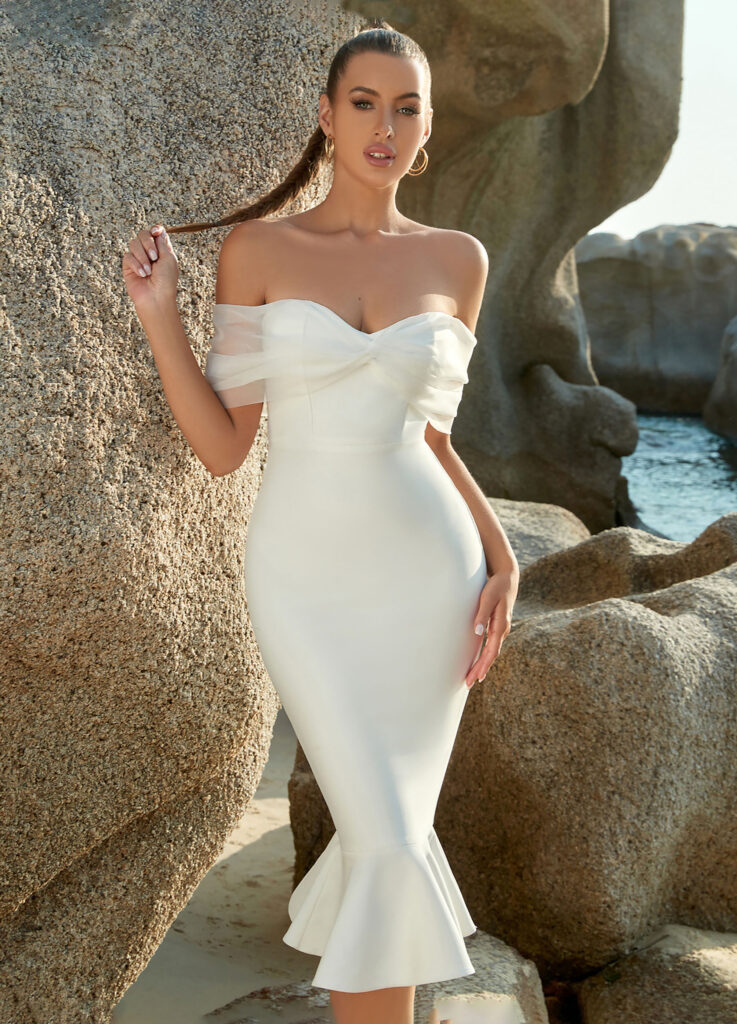Bodysuits, or tight-fitting one-piece garments, are favored for their ability to showcase the body’s contours comprehensively. The history of this trendy item is rich and colorful, evolving from acrobatic performance clothing to a modern fashion staple, marked by innovation and transformation.
Origins: The Evolution of Acrobatic Attire
The origins of bodysuits can be traced back to the mid-19th century. In 1859, Jules Léotard, a French acrobat known as “The Flying Trapeze Artist,” invented a tight-fitting garment that covered the upper torso, including the crotch area, which became known as leotards. Initially designed to allow acrobats greater freedom of movement during performances, leotards gradually gained popularity among stage performers due to their ability to accentuate the body’s lines.
Adaptation and Popularization: From Circus to Everyday Wear
By the early 20th century, leotards had become a staple for stage performers. However, it was in the 1950s that they truly entered the public eye. American designer Claire McCardell redesigned and modified leotards by adding snaps at the crotch, making them more convenient for everyday wear. This modification allowed tight-fitting one-piece garments to fully showcase women’s body lines and became a sex symbol for Playboy bunnies in the 1960s.
Fabric Types and Characteristics
Bodysuits come in a variety of fabrics, each with its unique characteristics and suitable occasions:
- Spandex Cotton: One of the most common fabrics for bodysuits. It offers good elasticity and breathability, fitting closely to the body’s curves while maintaining comfort. Spandex cotton bodysuits are suitable for everyday wear and light exercise.
- Lycra: Lycra fabric is renowned for its exceptional elasticity and recovery. It provides greater freedom of movement while maintaining body lines. Lycra bodysuits are ideal for high-elasticity activities such as dancing and yoga.
- Silk: Silk bodysuits are favored for their softness, smoothness, and elegance. Often used in high-end fashion occasions, they showcase women’s femininity and grace..
- Nylon/Spandex Blend: This blend combines the durability and wrinkle resistance of nylon with the elasticity of spandex. Suitable for sports-style bodysuits, providing adequate support and comfort.
- Knitted Fabric: Knitted bodysuits are popular for their softness, comfort, and warmth. Often worn in casual settings such as family gatherings or daily outings. Knitted fabrics offer good breathability, keeping the body dry.
- Lace:lace bodysuit is a fashionable and uniquely charming garment, often featuring delicate lace patterns and elegant tailoring, suitable for a variety of occasions such as casual daily wear, dates, parties, and more.
Fashion Trend: From French Icon to Global Fashion
The true fashion trend of bodysuits can be traced back to the 1950s, when French fashion icon Brigitte Bardot conquered Hollywood with French-invented bodysuits. A ballet dancer herself, Brigitte Bardot wore fashionable and daring one-piece pants, capturing the hearts of Hollywood’s sex-obsessed female stars and making bodysuits a true fashion item.
Diversification and Fashion Challenges
Over time, bodysuits have become more diversified and fashionable. From deep-V one-piece outfits to sheer bodysuits, and various materials and cuts, bodysuits continuously satisfy fashionistas’ pursuit of novelty.
Modern Fashion: Versatile Wearing Options for Bodysuits
In modern fashion, bodysuits have become an indispensable trendy item. They are not only used in stage performances and magazine shoots but have also become an essential part of everyday wear. From pairing with jeans to skirts, from sweatpants to blazers, bodysuits can be matched with almost any item, showcasing different styles and auras.
Furthermore, with the return of vintage trends, bodysuits have regained attention in the fashion circle. Whether it’s Zara’s backless designs or vintage looks on major catwalks, bodysuits prove their lasting influence and innovative potential in the fashion world.
